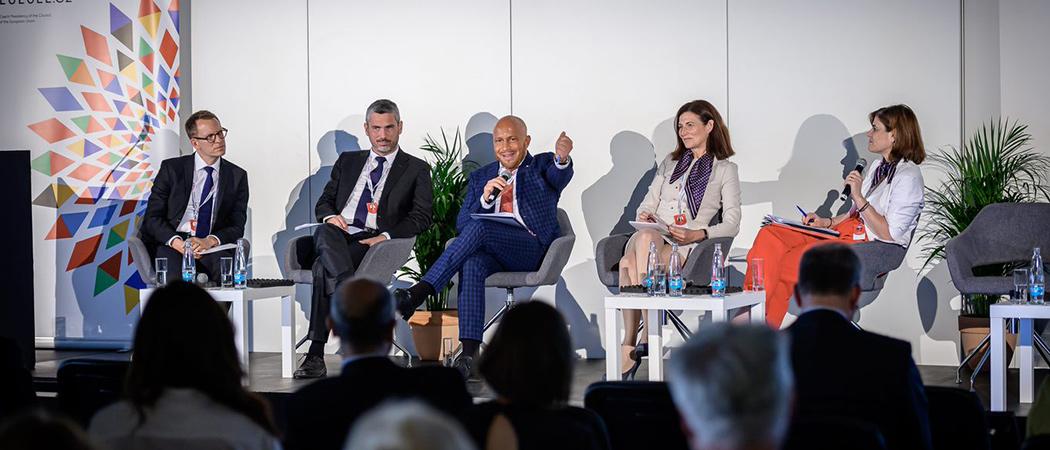The rules for blending research and innovation funding are not fully aligned yet, but there has been progress in removing legal hurdles

Representatives of national governments and the European Commission at the Prague conference on synergies. Photo: EU2022.CZ
The Czech presidency of the Council of the EU is to publish a declaration calling for the removal of barriers to funding synergies, following the publication of a new European Commission guide to help member states think beyond Horizon Europe and use the EU’s full spectrum of research and innovation funds.
The Prague Declaration will be based on a debate that took place last week in the Czech capital, where policymakers from Brussels and EU capitals convened to discuss the legal hurdles that prevent governments from spending structural funds on R&D projects.
The Czech governments sees synergies as a way to increase research and innovation funding intensity in Europe. Sources close to the Czech presidency of the Council say the declaration on synergies will be published by the end of July.
The 2021 – 2027 EU budget is expected to allow more of the cohesion funding that is intended to help less-developed member states and regions level up to be spent on R&D projects that are endorsed with the Commission’s seal of excellence.
In addition, EU regional funds could be made available directly from national authorities, significantly reducing the administrative burden for applicants.
But member states want to go further, in exchanging ideas and identifying bottlenecks that stand in the way of combining EU funding streams for the benefit of researchers and innovators.
Speaking at the Czech presidency conference in Prague last week, Anna Panagopoulou, director for the European Research Area and for innovation at the Commission’s research and innovation department, said the EU has not managed to “align all the rules” for financing R&D yet but the progress made over the past few years is “a big success”.
A few days before the conference, the Commission published guidelines intended to better explain to member states how to route structural funds to research projects. “We tried very hard in the European Commission to simplify [synergies] in the current financial framework,” said Panagopoulou.
Delegates at the Prague conference said the rules should be clearer
Václav Velčovský, deputy minister for EU affairs in the Czech ministry for education, said governments will soon be faced with budgetary constraints and EU funding synergies could help make up for potential cuts in national research and innovation budgets.
However, countries have not been successful in making use of mixed funding opportunities, such as the seal of excellence. Slovakia has improved its success rate in calls under Marie Skłodowska Curie actions, but the volume of applications and grants is still low. “I think implementing the seal of excellence should motivate the participants to participate or engage in the calls more actively,” said Ľudovít Paulis, state secretary at Slovakia’s ministry of education, science, research and sport.
However, Paulis said the country has a poor track record of actually transferring money from its allocated envelope of EU structural funds to a national fund for Horizon Europe applicants holding seals of excellence. “You need to do some adjustments in the project anyway because the eligibility criteria for the costs in Horizon are different from the eligibility criteria in structural funds, and different from the eligibility criteria in the national budget,” he said.





 A unique international forum for public research organisations and companies to connect their external engagement with strategic interests around their R&D system.
A unique international forum for public research organisations and companies to connect their external engagement with strategic interests around their R&D system.